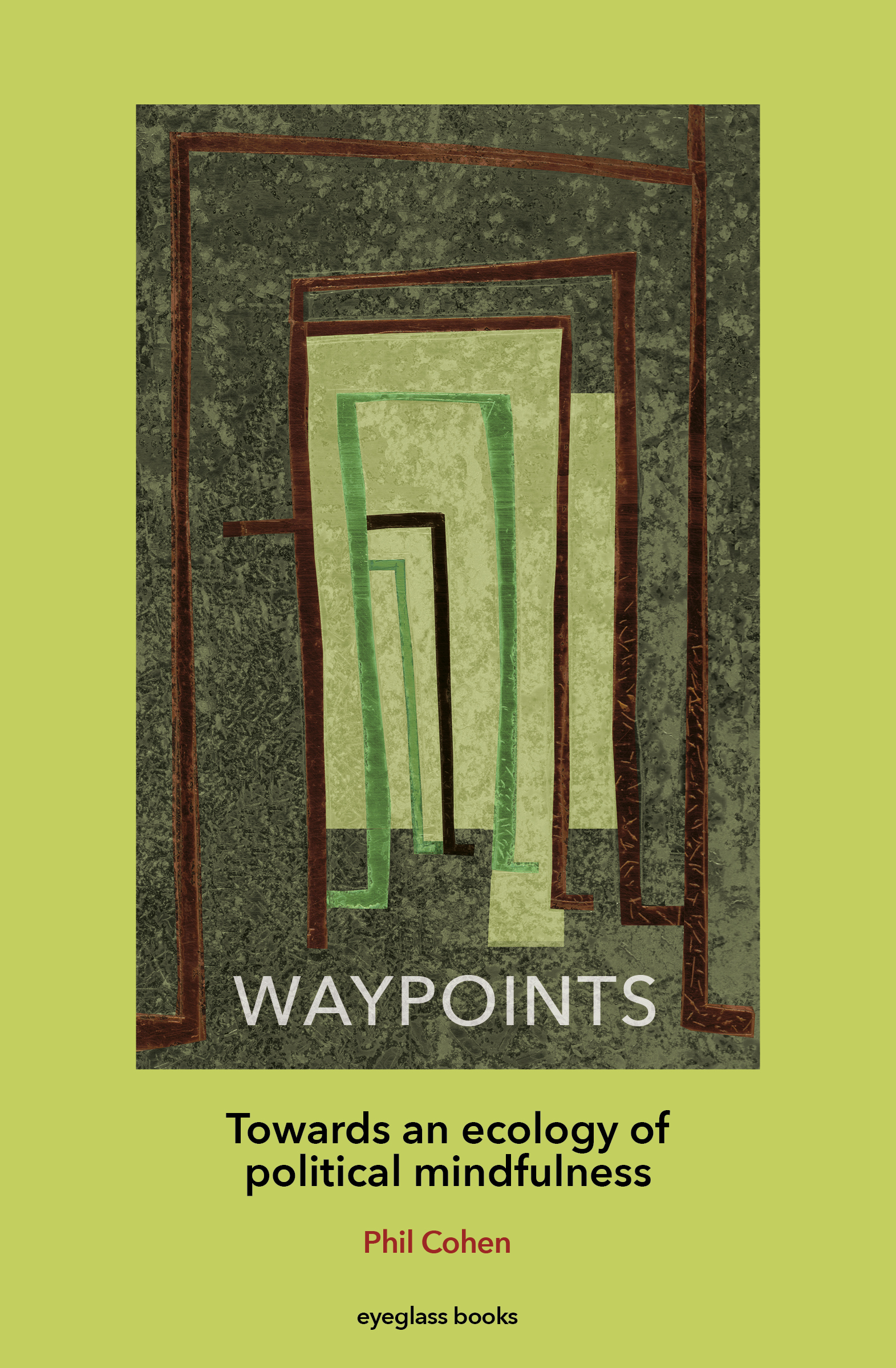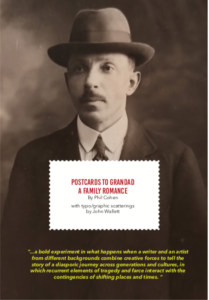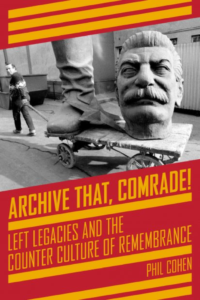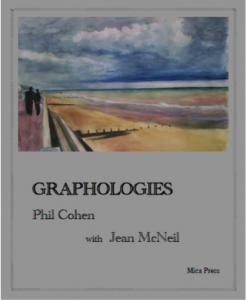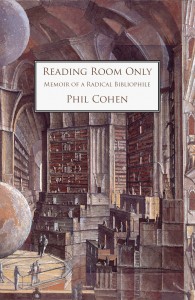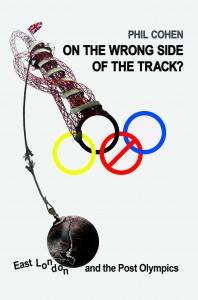As Londoners we are used to buildings crowding out the sky, the constant friction of human traffic, the barrage of audio-visual noise which cuts into our thoughts and counterpoints our conversations on the street. And so we cocoon ourselves inside little immersive techno-bubbles which are just as invasive, but at least of our own choosing, and we seek out little niches of tranquillity amidst the urban buzz: churches, squares, unfrequented places and of course parks, so many refuges from the oppressive circumstances of everyday city life.
The Queen Elizabeth Olympic Park is not a refuge from the city, it is a prospect on it. The first impression as you walk onto it from the main entrance is of an infinitely expansive space, a series of vistas that pull the eye to a skyline dominated by the iconic landmarks of financial power clustered around Canary Wharf and the old City of London. With the exception of the Arcelor Mittal Tower, whose convulsive grab at the sky is an eccentric reminder of pre-recession Olympic hubris, the legacy buildings hug the ground, as if wanting to merge into the landscape, to subsume their architectural identities in some unifying organic vision of public space.
The park is divided into clearly demarcated zones, with spaces designated for particular kinds of permitted activity: you play here, walk there, run and cycle over there, spectate at these points. The main principle of articulation is provided by the wide paths that circumnavigate the park. To describe them as paths suggests something intimate and even mysterious, but these are broad arteries which evoke crowds, processions, parades, marches, even demonstrations. They would be boulevards if there were shops along them and to walk along them unthronged, as they were on this weekday, is a somewhat eerie experience. I noticed that the few visitors there were, joggers, cyclists, some elderly flaneurs and the ubiquitous Japanese tourists, clung to the edges of these highways as if expecting a sudden deluge of people or cars.
The park itself is open access day and night but is heavily patrolled. Everywhere you go there are CCTV cameras and security guards either on foot or in buggies. Two of the security staff I interviewed boasted that it was the most securitised park in the world with total coverage 24/7. There are simply no blind spots where you are unobserved. One local from the nearby Carpenters Estate described it as ‘like an open prison’ but his two friends were more appreciative, citing the reinstatement of allotments and the cheapness of the Aquatic Centre as examples of how the LLDC had listened and accommodated their demands.
Whether or not a distinctive night time economy of use will develop remains to be seen, but there seems to be little opportunity for pursuing illicit forms of pleasure, like smoking a joint, or engaging in a sexual romp al fresco. LOCOG may have used the taggers art to promote a ‘hip’‘image for 2012 and ‘inspire a generation’, but there is not a graffito in sight. Urban explorers and place hackers will steer well clear, though they may be tempted by the tunnels which run under the site. Equally the park is unlikely to become a gay cruising ground, like parts of Hampstead Heath, because, irrespective of the strict surveillance measures, there is just not enough cover. As for more conventional forms of recreation, although there are no signs saying ‘no fishing, no swimming, no flying of kites or model airplanes’, the byelaws prohibit these and many other activities. Strangely there is no open air table tennis or chess, even though one is an Olympic sport and the other aspires to be.
Given the fact that the Olympic legacy venues remain potential terrorist targets, the focus on security is inevitable, yet more generic, but still draconian, norms of public order seems to have operated in planning the park. The effect will be to marginalise, if not entirely exclude, groups deemed to be ‘undesirable’ or sources of potential trouble. Alcoholics, who tend to congregate in parks during the Summer, have not so far been much in evidence, according to my security informants. Nor will the rough sleepers, who have established a local presence in nearby Westfield Shopping Centre after dark, find a welcome here. Begging, soliciting or public meetings are also not allowed, so don’t bother trying to organise an impromptu love-in or a political protest here. No shouting, singing or playing of music instruments either. Tell that to the Hammers fans when they arrive in force in 2016! And by the way, there is a large ‘roundabout’ where several paths converge which would make an ideal Speakers Corner for East London, especially now that the original one in Hyde Park is no more.
Despite the tight ground control, there are already encouraging signs of trespass. People are beginning to assert their own claims and patterns of usage, accepting the LLDC’s invitation to ‘own the park’, albeit in often eccentric ways. I met an Australian naturalist who said he was prospecting for a site to release some harmless grass snakes to put a bit of wildness back into the carefully cultivated ‘wildernesses’. A middle aged lady who was taking her pet parakeet for a walk told me that she planned to make it a regular thing as her ‘Mo’ ( the bird was,inevitably, named after one of the heroes of the Games), felt at home in the park. A little birdie also told me that amongst the guerrilla gardening community there are plans afoot to introduce marijuana plants to restore the ecology to its pre-Olympic diversity. Meanwhile the seats lining the main paths, many of them inscribed with factoids from local history, are beginning to attract the vertically challenged. I encountered a small group of local pensioners who told me they met up regularly at the same spot every day to chew the fat. Dog walkers are the most obvious group of regular users and they are officially encouraged, although there were not many about on this particular sunny Summer day and I saw no evidence of dog toilets, let alone ‘poop scoops’ being provided as they are in many parks.
The majority of people I saw were in uniforms of one sort or another: maintenance and security staff (they used to be called them gardeners and park keepers once upon a time),construction workers from the nearby building sites and, most in evidence, parties of school children in their bright yellow and red safety jackets, technicolour centipedes laboriously winding their way through the park in search of lunch, or just possibly, buried treasure.
There were no young people about. Perhaps they were all either in employment, education or training as they are supposed to be. Yet there are quite a few ‘Neets’in Newham and the park would make an obvious rendezvous to chill and hang out, especially when the weather is fine. My conversation with the security staff partly explained their absence. They claimed that a number of local drug gangs had sent ‘outriders’ to sus out the area shortly after the park opened, but had been quickly spotted. They had been invited in to the security control room to see for themselves the CCTV monitors in action and be assured that they would be prosecuted if they broke any of the numerous by laws. They have not been back. However I suspect that once the park fills up on Summer weekends and for big events like rock concerts, they will use the cover of numbers to infiltrate and set about business-as-usual.
The Velo Park is obviously an important teen attraction and so is the Copper Box, but if you are’nt into bikes, and cannot afford the price of a ticket to hear your favourite band, then these become no go areas. The large paths are made for skateboarding, and so is some of the park furniture, but this is on the list of banned activities except in Frontside Skate Park on the fringes of the site which has understandably proved very popular.
It is a great pity that the Beat Box, an interactive music and dance space, was not retained from 2012 and although the Youth Legacy team has made some useful input into the design of legacy facilities, they have not really addressed the central youth issue. Young people need a space to call their own, where they can hang out free from adult interference and control; but they also need defensible spaces in which they feel safe enough to explore new lines of desire without bullying or harrassment; they are continually improvising micro-territories for this purpose in various kinds of edgeland, in between spaces, which like adolescence itself, offer a moratorium of structured irresponsibility between the confined world of childhood and the home to work tramlines of an adult career. Stairwell and garages in housing estates, cemeteries, waste ground, derelict buildings, abandoned cars, back alleys, these comprise the ‘out of bounds’ geographies of growing up in the working class city. Strictly speaking the Olympic park has no edgelands, it is open plan and lacks intimate spaces. Heather and Ivan Morison’s artwork Cross and Cave is an installation which contrives such a space, and it may work as a den for kids, but it is not the real deal as far as teens are concerned.
Fortunately young people are resourceful. I remember working with a group of Bangladeshi teenagers living on the Isle of Dogs who were subject to very strict parental surveillance, the girls especially not being allowed out unless accompanied by a family member. Their solution was to meet in the public library under the pretext of doing their homework, thus both allaying parental fears and providing themselves with a safe place to gossip, flirt and arrange liaisons. We can expect teens living in E 16 and E 20 to be equally inventive.
Children are much better catered for in the park. Tumbling Bay is a brilliant piece of play sculpture, yet despite its name it is no rough and tumble adventure playground where children build dens, or make games and toys with whatever materials are to hand. That kind of genuinely adventuresome play space, inspired by the way East End blitz kids improvised playgrounds out of bombsites during the 2nd world war, has long since vanished, thanks to health and safety regulations. The information pack produced for children is also good value, but again there is nothing that addresses the interests of teenage visitors. We are hoping to remedy that with our schools project which will produce a map and guide to the Park by and for young people.
The art works and poetry installations which are dotted around the park are often interesting,but with the exception of Monica Bonvicini’s RUN, a genuinely iconic piece of prescriptive semiology, they do not stand out. Some are little more than aesthetic camouflage for utility structures :Open Folds,Carpenters Curve,Underwhirl/One whirl and LFO Spectrum which decorates the security fence close to the Velodrome fall into this category; others are just overblown visual statements of the obvious (Steles and Streamline). There are some good poems .John Burnside’s Bicycling Ladies is a wonderful lyrical tribute to Sylvia Pankhurst and suffragettes and Lemn Sissay’ s’Spark’ about the Bryant and May’s match girls strike is an in-your- face rap that has you chanting along with it. There are also some not- so- good poems. Carol Anne Duffy’s maudlin ‘Eton Manor’ and Jo Shapcott’s winsome ‘Wild Swimmer’ just try too hard to find ‘winning words’ (the title of the commission) to promote the 2012 aspirational agenda . Worse still, the students of Chobham Academy are faced with the prospect every morning of reading an excerpt from Alfred Lord Tennyson’s poem ‘Ulysses’ with its gung- ho exhortation ‘to strive, to find and not to yield’ inscribed in pink marble outside their front door. It is no doubt intended to inspire a new generation to achieve their full potential but is more likely to turn them off poetry for life[1]. The most interesting work, in both media, explores the back story of the Olympic park, its labour and environmental history whose material traces are now largely invisible. The field guide offers an informative inventory of these works, but there is a need for a narrative which joins up some of these dots. That is what we are hoping to achieve with our audio heritage trail ‘Tunnel Visions’.
At present there is only one information centre in the park, a makeshift portakin at the main entrance. Clearly there needs to be information points at every entrance. The security staff play an important social, and not merely policing, role – they are the main point of contact for visitors; they are often stopped and asked for all kinds of information, including the background story to the park. Perhaps their role should be re-described as park wardens, to indicate this wider and more positive function. But their training would need to reflect that fact. I asked one of them to use the visitor’s map to direct me to Hopkin’s Fields. He did’nt have a clue despite it being clearly marked. He could not correlate the map with the territory he walked and experienced everyday in the course of his work. He gestured vaguely in the direction of the Copper Box, then he had a sudden inspiration. ‘I know ‘ he said ‘ its where I found a wounded pigeon a few weeks ago’. As soon as a memoryscape could be evoked, one populated by narrative incident, the geography of the Park became clear and he could translate back into map terms[2].
East Village brought into focus some of the questions which were beginning to surface in my mind as I walked the park. Its solid phalanx of apartment buildings with their near uniform facades represents a challenge to the dominant aesthetic of the park design which rejects one-size- fits- all philosophy in favour of what its chief architect has called ‘fragmented organicity’. The uniformity of the blocks certainly gives physical expression to the ‘tenure blind’ approach adopted for this mix of private and social rented housing. But will ‘pepper potting’ and a class- blind allocation policy be any more successful than ‘race blind’ approaches in eradicating distinctions of socio-economic and even moral status? Or will these reappear in new guises? That is one of the key questions which our ethnographic research with incoming residents is designed to address.
The balconies which stud the facades will be one key social signifier. Will they be used as an extra room with a view onto the street theatre below, as the word itself suggests? Or perhaps a sun lounge where you can sip your beer, or Martini, while taking in the urban scene as shown on TV ? Or will they be treated more like lumber rooms, where you put stuff you can’t find space for anywhere else, and rarely use? Will the boys colonise the space with their toys or will it be all too familiar women’s territory, as they engage in some horizontal gossip with the neighbours across the way while hanging out the washing? So far the balconies are empty. I saw two young black men each leaning over their balconies smoking a cigarette- perhaps it was banned indoors- but as they were on different floors, they remained unaware of each other’s existence.
Although there were furniture vans parked outside some of the blocks, there was little other sign of activity. There was one moment when I was standing at a corner facing a recessed brick wall, when I had a distinct sensation of déjà vu. This was somewhere straight out of a Chirico metaphysical painting.
The only people around on the street were young mums with their toddlers on their way to the nursery, or Westfields. I stopped two of them and asked for their first impressions. Yeah, it was OK. They were neighbours, both came from East Ham, and had kids roughly the same age, so they had a lot in common. Sharon thought that one of her other neighbours was a bit stand offish: ‘they look down their noses at you as if they wonder what you’re doing in a posh place like this, but some of them are all right. One bloke – I think he works in the city and he’s got a Lamborghini- he was very friendly, and helped me up the stairs with the pram’. As we were talking another young mum stopped to see what was going on and then another joined what had by now become a kind of impromptu focus group. I got the impression, listening to them talk that they were holding their breath, waiting for something to happen, either good or bad.
I also asked a group of construction workers sitting outside having a tea break what they thought of the development. Would they like to live in East Village? To my surprise they almost all said ‘no’. A Sikh carpenter, who had just finished snagging work on the flats, said that under no circumstances would he move in with his family. The bedrooms were too small, and there was nowhere the kids could play under their mother’s eye. The proverbial Polish plumber volunteered that most of the residents were young professionals who did not have children. In his view the buildings looked like prison blocks – the inhabitants just went from one white cell (their office) to another (their apartment). What kind of a life for a man was that? There were nods all round from his colleagues. An echo then of the traditional blue collar worker’s dim view of the mouse- pushing white collar salariat and their life style choices.
Of course it is early days. The shops, pubs and restaurants planned for East Village have yet to open. They will undoubtedly bring more of an urban buzz to the area. And the blocks themselves are only half populated. When University College London build their campus here, and the Victoria and Albert Museum opens its doors, when the Chobham Manor neighbourhood is built, we can expect daily throngs of students, visitors, and residents. In the meantime perhaps we should just enjoy the ‘Chirico moment’ while it lasts.
[1] I have discussed the artworks and poetry installations in detail in On the Wrong side of the Track:East London and the Post Olympics Lawrence and Wishart 2013. Also ‘Carrying the Torch? :Poetry @ the Olympics’ in Agenda Summer 2012.
[2] The site maintenance and security staff are trained observers, the former of the behaviour of plants and animals, the latter of human mammals, both in their more unruly aspects. In principle they could be key informants in any field work study of the Olympic Park, but again they would need additional training which moved beyond precautionary principles and sensitised them to the more positive dimensions of both sets of interactions.





